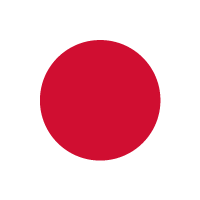
Have you ever been surprised in Japan when the supermarket clerk didn’t hand you a shopping bag? In Japan, bags are not given automatically, and this unique rule often confuses international travelers. Not knowing this system can lead to unexpected inconvenience or small troubles during your trip.
This guide explains why bags are not provided automatically, how to ask for one politely in Japanese, the growing eco-bag culture, and the differences between supermarkets and convenience stores. In just a few minutes, you’ll learn essential shopping etiquette that makes traveling in Japan much easier.
Why Japanese Supermarkets Don’t Give Bags Automatically: Policy and Environmental Rules
In Japan, shopping bags are not handed out automatically because a nationwide “plastic bag fee” law requires stores to charge for them. Based on guidelines from Japan’s Ministry of the Environment, supermarkets must reduce plastic use, so customers—including travelers—need to clearly request a bag if they want one.
This system is often highlighted in travel guides as part of “Japan supermarket rules,” and it’s a common source of misunderstanding. Knowing the background helps you shop smoothly and avoid unnecessary charges or confusion at the register.
Typical Prices for Shopping Bags at Supermarkets and Convenience Stores
Shopping bags in Japan are not free. Prices vary depending on size and store, but small bags usually cost around ¥3, medium bags around ¥5, and large bags between ¥5–10. These prices follow national environmental guidelines and are similar across most major supermarket chains.
Prices shown here reflect the general range as of November 2025.
Useful Japanese Phrases for Asking “Can I Get a Bag?”
In Japanese supermarkets, you must request a bag if you need one. The simplest phrase is “Rejibukuro kudasai” (A shopping bag, please). For a more polite version, you can say “Rejibukuro wo onegai dekimasu ka?” which clerks are very familiar with and easy to understand.
If you want to specify the size, try “Ookii fukuro onegai shimasu” (a large bag, please) or “Chiisai fukuro wo ichimai kudasai” (one small bag, please). These phrases make shopping far smoother during your stay in Japan.
Why Eco-Bags Became the Norm and What Travelers Should Know
Japan’s eco-bag culture grew rapidly due to environmental policies and the nationwide plastic bag fee. As part of a push to reduce plastic waste, bringing your own reusable bag has become standard at supermarkets and convenience stores. Understanding this habit helps travelers avoid extra costs and shop more efficiently.
Differences Between Supermarkets and Convenience Stores
Supermarkets and convenience stores in Japan handle bags differently. Supermarkets usually ask whether you need a bag, and you can choose from several sizes. Convenience stores may give a small bag more proactively, but this varies by chain and location, so travelers should not assume bags are free.
Items like prepared foods or cold drinks sometimes come with a small free bag for hygiene reasons—one of the commonly misunderstood Japanese shopping rules.
Is It Rude That Clerks Don’t Offer Bags? Common Misunderstandings
When Japanese clerks don’t offer you a bag, it’s not rude at all—it’s simply because the law does not allow stores to provide bags without confirmation. Since bags are charged under Japan’s environmental policy, clerks must wait for the customer to express their preference.
Japanese staff are generally very polite and will gladly help once you ask. Saying a simple “Fukuro wo onegai shimasu” (A bag, please) ensures smooth communication and prevents unnecessary stress during your shopping experience.
Summary
Shopping bags are not given automatically in Japan due to environmental policies and the plastic bag fee—not because clerks are unfriendly. Learning the basics of Japan’s eco-bag culture and checkout etiquette helps you shop with confidence and deepens your understanding of Japanese daily life. For more travel tips, check out our guides on convenience store manners, waste disposal rules, and other essential Japanese etiquette for visitors.

 日本語
日本語 中国語
中国語 Español
Español